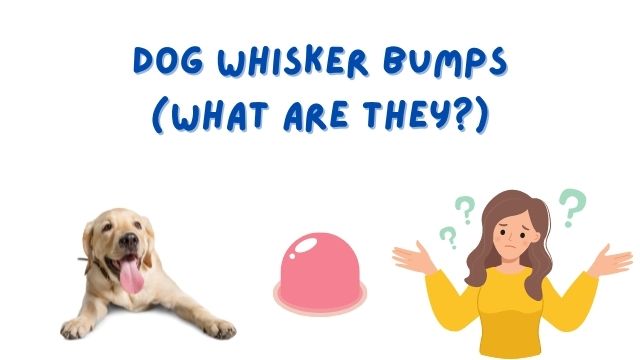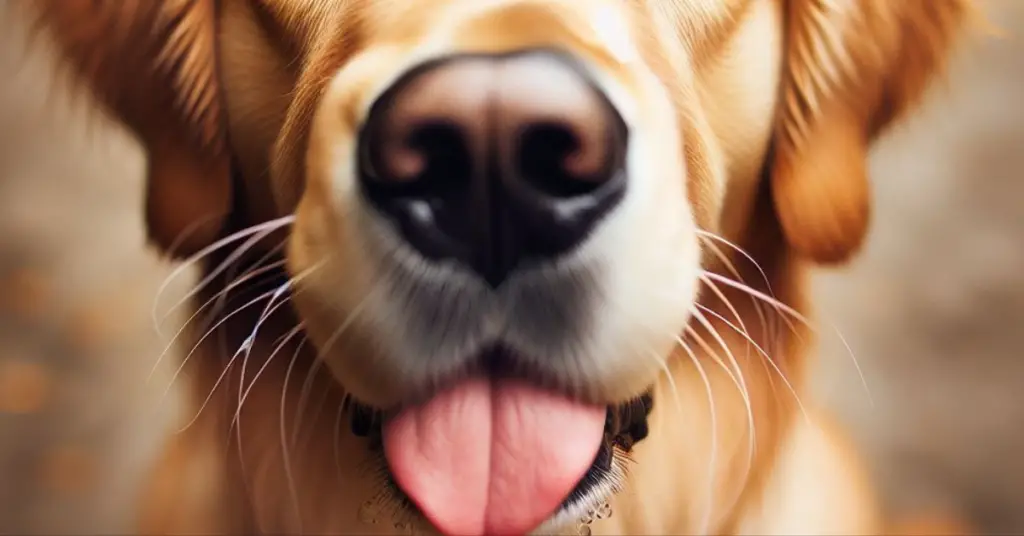While admiring the overwhelming amount of cuteness your pooch holds within its fluffy little face, you might have noticed some small bumps on its cheeks called whisker bumps. Maybe you’ve never noticed these small whisker bumps in your canine.
The bumps under a dog’s whiskers are completely normal for dogs. These bumps are mostly sebaceous cysts that are not harmful to your canine in any way. These bumps arise when a skin follicle is blocked or clogged with sebum.
If you are wondering why dogs get whisker bumps, this article has got you covered. Later on, we will also consider the reasons some dog whiskers get swollen. We’ll also give a few tips about what you can do if you suspect something is not right with your dog’s whiskers.

What Are Bumps Under Dog Whiskers?
Almost every dog has this bump at some point in their lives. Moreover, even if nothing is done, these bumps will usually resolve on their own without any medical intervention. If you pop a sebaceous cyst, what you get is some whitish discharge.
Popping these cysts causes more harm than good for your pooch. So don’t do it! (no matter how bad you want to) Furthermore, a whisker bump can also be triggered by skin irritation to food your dog ate.
However, you should always pay close attention to bumps you notice in your canine. If your dog keeps rubbing the bump spot, it’s a pointer to something serious. Any form of bumps in your pooch could be something ranging from a benign cyst to a malignant tumor.
When you notice something is not right with your canine, schedule an appointment with your veterinarian. Your vet may perform diagnostic tests to determine if the bump or lump is benign or cancerous.
Why Does My Dog Have a Lump on His Whiskers?
A lump on the dog’s whiskers can be caused by different factors. A simple bug bite can trigger the growth of a lump on your dog’s whiskers. In addition, a lump on your dog’s whiskers could also be a result of a minor trauma your dog got engaged in.
If it happens your pooch got bitten by a bug in the facial area, this would most likely result in a lump at the initial stage. Moreover, a lump caused by a bug bite would typically start reducing in size as to a malignant lump that will only grow with time.
Furthermore, a lump on your dog’s whiskers can occur as a result of clogged pores. An abscess is another common cause of lumps on dogs’ whiskers. So, if your dog has an abscess, applying a hot pack to the affected areas would make a huge difference in opening it up.
If you observe other associated symptoms with a lump on your dog’s whiskers, it’s time to schedule an appointment with your vet. For example, if the lump keeps growing and oozing out discharge, or your canine is trying not to touch the area, it is worth seeing a vet for these reasons. However, lumps that appear on dogs’ whiskers are mostly benign.
Why Are My Dogs Whiskers Swollen?
A common skin condition that causes swollen whiskers in dogs is folliculitis. Dogs with this skin condition have redness and itchy whiskers. This condition is often caused by bacteria. At other times, folliculitis can also be caused by viral or fungal infections.
Furthermore, folliculitis can develop in any type of dog breed. Although experts have discovered that folliculitis is more common in canines with allergy issues.
In addition, trauma is also known to cause swollen whiskers. Rarely, swollen whiskers can also be caused by systemic issues. When you notice any form of inflamed or swollen whiskers in your canine, ensure you take your pooch to the vet for proper medical assessment.
Moreover, folliculitis is treatable. The treatment your veterinarian uses would depend on the root cause of the folliculitis. A vet wouldn’t need to conduct any special diagnostic tests to diagnose folliculitis.
However, to determine the cause of folliculitis in your canine, special diagnostic tests would be needed. If the swollen whiskers are not something of concern, your vet will likely recommend a topical cream to reduce inflammation.

Can Dogs Get Pimples on Their Whiskers?
Yes. Dogs can develop pimples on their whiskers. Pimples in canines often appear as red bumps in the facial region, especially on the muzzle and lips. At other times, pimples can as well be triggered by a lot of sebum and dead skin cells.
Acne in dogs is a potentially dangerous condition. If you fail to treat pimples in your dog, the hair follicle can get infected. In addition, failure to treat pimples on your dog’s face will eventually lead to the lasting scarring of your dog’s face.
Some dog breeds are known to be more prone to acne than others. Examples of such breeds include Rottweilers, English Bulldogs, Mastiff, and so on! In rare cases, pimples in dogs can be a sign of some underlying health conditions.
Furthermore, speak with your vet as soon as you notice pimples in their early stages. Vets would often treat acne in canines by applying benzoyl peroxide. As a dog owner, I quite understand that pimples on whiskers can be tempting to pop.
Just don’t do it! Popping a pimple would likely lead to more inflammation of the hair follicles. In addition, environmental factors can also be a predisposing factor for dogs having pimples. However, for the right diagnosis, visit your vet!
Conclusion
As we earlier discussed, dog whisker bumps are perfectly normal. You should know how to distinguish between acne spots and whisker bumps. Acne spots are always itching, unlike normal whisker bumps. To be on the side of caution, speak with your veterinarian when you suspect something is not right with your canine. To prevent acne in your dog, ensure your pup maintains good hygiene. Finally, no matter how tempted you are, do not pop your dog’s pimples.

